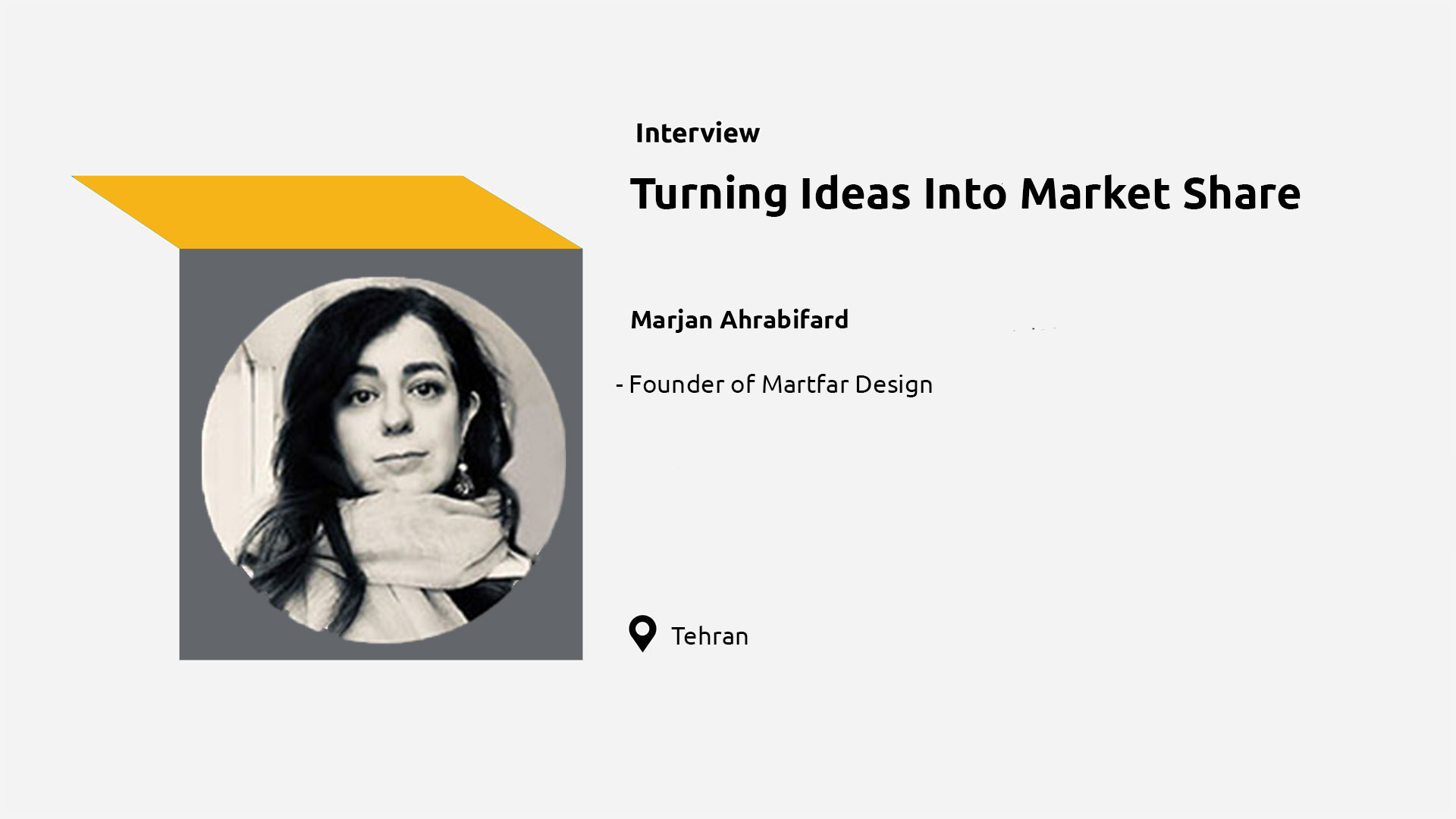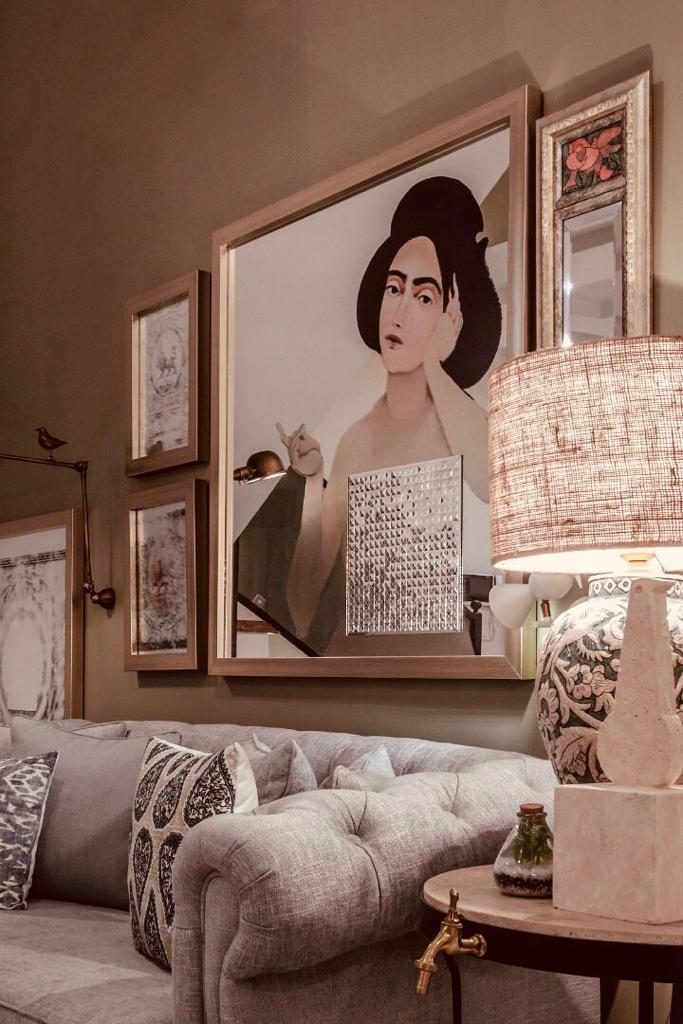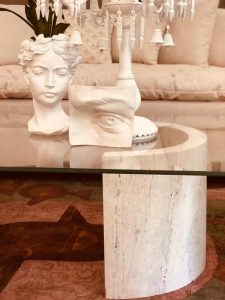

In this interview with Marjan Ahrabifard, we talked about how to turn ideas into the market share and we discussed why manufacturers and designers haven’t been able to link and cooperate together.
_ Thanks for accepting my invitation. It is such a pleasure to have a conversation on Design together. First of all, I’d like to have an introduction about yourself and then we’ll get to our title.
+ Since we’re talking about design, I should go back to the time which I think is a shared experience for all of us. My first experiences in design go back to my childhood when I used to play with playdough, scissors, and paper. Fortunately, my family had no problem with my habit of making a mess and building different things. I kept on doing it till I was 13 or 14 when I could enter the thinking room of the family! In the way that I could share my ideas for buying or reconstructing things. So that I was able to participate in making decisions for the house and family. Once I got older, people around me would come to me and ask for my opinions on what they wanted to do: “Marjan I’m gonna do this or that…”. So that I got the chance to have some experiences in testing myself and doing things on my own. Of course, I still needed to gain academic experience in that field. So after I finished my studies in Chemical Engineering I majored in Interior Architecture. After that, during the time that we were colleagues, I started teaching at university. Therefore, I gained some experience in teaching. I enjoyed encouraging youngsters to go for what they’re interested in and telling them that it’s never gonna be late. Though I gained rewarding experiences in teaching, at that time design wasn’t taken into account. So I myself started to focus on my projects and argue with the employers and contractors to provide the materials I needed. I would put lots of energy into furniture construction and since I didn’t want the market to make the dos and don’ts of my decisions, I started working with a furniture brand with a long-standing reputation. Gradually I could enter the field of furniture construction and into a carpenter workshop. Believe it or not, I used to drink tea in mayonnaise sauce cans in which I’d keep tinner or paints! So I could make a friendship with people in the workshop which led me to have my own workshop. That was the time I could make the environment I preferred for furniture construction. Due to the objections I always had in the field of furniture, I could participate in furniture judgment. These objections to furniture construction which managed people’s taste, made me have a critical view and realized that designers are missing in industrial manufacturing.
_ As you know, we’re now focusing on the furniture industry. You are experienced in design and also in the process of manufacturing. You are the founder of a company and have been in a designer and a producer’s position. Now here’s my question: Why has our furniture industry or the industry itself never been able to trust the designers or why haven’t the designer gained the trust of the industry?
+ You know that I have always been supportive of designers. In every industrial group, NGO, or community I’ve been with designers fanatically; however, I’m gonna look into how much designers and producers are responsible for the fact that they haven’t been able to link and work together. In fact, for an industrialist, business is like a saddled horse meaning that they can define the market in the way they like to. On the other hand, a designer thinks that once they enter a company, they can play a big role in navigating the market based on their knowledge and ideas. Such change in the industry is rather abrupt and not possible for companies; moreover, designers are not familiar with the machinery. They don’t know the facilities and limitations of machines. Taking the relationship between an industrialist and a designer into account, design thinking is one of the aspects of that. Not only do producers or industrialists have no trust in designers to manage the projects and expand the market share by only the concept and ideas, but also they are concerned about losing the market share they already have. Therefore, I tried to increase my knowledge of construction by being present in workshops and around producers. I got to learn about the machinery and the process of designing and constructing. After that, I had something to talk about with the producers. They’d always sneer at me when I was talking about something in the workshop not knowing the professional terms and concepts. But now, whenever there’s a problem they tend to refer it to me asking me what to do! All I say is that the designers should enrich their knowledge. There are many designers who couldn’t accomplish their great ideas just because of lacking knowledge. Many companies and brands have lost their chance to put their ideas into practice. Just like Kodak invented the digital camera but couldn’t find its path to the market. instead, others have done it and increased their market share.
_ Then it’s not all about the concept. A designer should know about the production cycle, the machinery, materials, packing, and all the things that happen after designing. Now here’s my question: in addition to all the things mentioned, what else should a designer be aware of in order to increase the market share of the brand?

+ One of the issues here is that the designers only focus on designing. On what they’re supposed to design. When designing a product, we should know the market capacity and what product is missing in it. When I’m talking to designers, I want them to imagine they’re gonna work for X brand. This brand has its own product portfolio and the products have already entered the market. What is your design proposal? It won’t be acceptable for you to design whatever they tell you just like an operator. So if you want to be a successful designer and get into the thinking room of a company, learn more about the production process.
It should also be mentioned one of the design problems is that senior managers are not in charge of design. According to my research, the brands that implemented design thinking and the senior managers were designers, became the greatest brands in the world, and increased their market share. While in the equivalent brands, middle managers were in charge of design and couldn’t make it to the market. A designer should know the market and try to enter the thinking room of senior managers. Otherwise, the designer won’t be relied upon and there’s no space for them to act. In a furniture design competition, the designers are not able to succeed unless they start to do field research, know the market, recognize which product to localize, and take ergonomics, anatomy, and anthropometry into account. You were one of the winners of the furniture design competition yourself. You know that designers won’t be successful unless they are active and gain knowledge. Therefore, one of the things that a designer should consider is the gap in the market. By market I mean the particular market designers aim to design products for such as niche markets, mass production, or office furniture. So they should know what product is missing in each category.
_ The fact is that design is no longer about one person designing something and doing all the things from scratch until it is produced. There are lots of interdisciplinary teams producing either tangible or intangible products, either product or service, either by thinking or experience which all are included in the design field. These teams take needs assessment into account at the very first stage and come up with a solution for that. This requires having an understanding of each other. Meaning that I as a designer should talk to a sociologist and a technical person. In order to turn your idea into a market share, you should be able to address your idea in terms of market needs. Your idea should also be producible not a mere design on paper or in your mind. You need to be aware of how your idea is going to be put into practice. So what step should the industry take to accept this? The more one side attempts to concord on something, the better results will come out. For example, we as designers need to try hard and never give up. But what about the other side? As you mentioned earlier, the industry should also take some steps.
.+ I have to go back to two years ago in 1398 and mention an example related to your question. That time we hold the first furniture design event in Tehran in order to show the industrialists that designers are putting their designs into practice without the need for cooperating with them. This event included several prototypes, some products made by reverse engineering, great cases from well-known brands, sculptural furniture, and also some products made by the designers regardless of having ergonomics. So we could show the industrialists the products made independently by designers. The industrialists were so excited and amazed. Because when it came to designing, they would always get help from family, relatives, and friends with good taste in design. When an industrialist attends Maison & Object, Milan Design Week, and well-thought-of design fairs and buys furniture to do reverse engineering and then enters it into the market, there’s a chance for designers and producers to link. I’m not saying that all industries are like this. We only need to attract the attention of the community that is more open to design and its essence. That was the step that the design furniture event took. This year again we provided the conditions for holding another event from the 2nd to the 5th of the Day in order to inform the industrialists about the activities of designers, convincing them of their attempts to know about ironmongery and to get closer to executive designs. We should even consider the other side of the design where some want to have their own conceptual and preferred designs which is not against what I’m saying. Perhaps, these people are likely to become the megatrends of the following years.
So maybe there are subsequent paths and designers in the field of furniture for the future. This way the permeability of industry to design increases little by little and it brings the chance for middle managers and design interns to become senior managers. That is when there’s a potential for designers and producers to cooperate in the international market. Our turnover in the field of furniture has the second position in Iran. meaning that the amount of money being exchanged in the furniture industry is very high. So designers can bring a huge amount of money to the industry and can earn as much. That is what industrialists should be aware of. We all are putting much effort into this area. We should convince the industrialists to even promote the designers if their designs were good enough to enter the market and mention the name of the designer in their collection. This is the step industrialists and producers should take for this connection between design and the industry. Regarding your experience in the furniture industry, focusing on both designing and producing, and also your activities in researching and teaching design thinking strategy, what would you comment on this issue?
_ To add more points to what you said, I should mention that if the business and industries have certain strategies, it is easier for them to decide whether they want to use the design or not. Imagine a furniture brand whose strategy is to make copies of others and has no vision to enter the international market. So the design won’t be an added value for this brand and its competitive advantage is the low prices. Of course, I’m talking about the scales inside Iran. So if industrialists have their strategy specified, they can easily tell if the design could be helpful for them. On the other hand, for a brand that aims to enter the international market, increase its market share, and have a competitive advantage, the design will definitely help it to achieve these goals. Even by increasing the prices and limiting the target buyers, this brand will be able to have more turnover. Therefore, having more buyers doesn’t necessarily mean more turnover. In the meetings with the founders and owners of businesses, I always say that benchmarking simply can make a difference. In Italian and German industries, design and designers play a vital role and they all compete to have better designs. That is why you have no time to stay behind. In these industries, beating the best materials and quality of materials is a must.
+ Though we are competing in the field of furniture in Iran, we already know that the consumers don’t have the knowledge of design. For example, if they ask us what the type of wood used in a product is, they will probably like it when they know it’s from a walnut tree rather than oak. So they’re not still familiar with design. Besides designers and producers, there is a third side called the consumers and their tastes. We haven’t been able to improve the tastes of consumers in the way that they care more about the design of products rather than materials. So we’re talking about the third side here which is consumers and the market. An organization or company with a certain strategy can decide whether the design can help it grow or not. Without the strategy, vision, and purpose, it can’t have an action in the market.
_ That’s right. I’m gonna add more points and say both groups, designers and producers have a target market in common. Meaning that the target audience for both sides is consumers. To improve the taste of consumers both designers and producers should take an action and put in lots of energy and attempts. Designers should accomplish better designs and the producers should know not only their cooperation with designers won’t lead to losing their market share but also they can have more share with design as an added value. Therefore, both sides should consider the consumers as the target audience and pay attention to their needs, not whatever they like. This selfishness is sometimes seen in the designers’ behavior. When I ask them: “why did you design this sofa?” They would reply: “I did it for myself!” That’s fine. In your own house and private studios, you have the right to design whatever you want. But if you aim to make money, get seen, and get invited to large cooperations you should design for the customers. It is wrong that some designers look down on others saying they can design whatever they want. We won’t be successful designers unless we recognize the needs of the consumers, sit on the sofas, work at the tables, discover these furniture problems, respond to our customers, and know about their feedback on our designs. A successful designer enters consumers’ homes by designing their furniture. One of the reasons for my success has been the fact that I’ve always designed only for the people, to bring comfort and joy to their homes. I started to work with better materials, change the construction technology, and try new ironmongery with a behavior-based approach. Meaning that I considered the behavior of customers and consumers. Besides, I designed lots of things for myself and based on my own taste which many people are not willing to buy! They’re mine and that’s ok! That is why we say tastes are different. All of us are trying to have healthy competition with each other bragging about our qualifications; however, a successful design is the one that is made for people and their comfort in life.
_ I have criticized the industry that it should specify its strategy. On the other hand, if the designer assumes that their knowledge and experience in designing is enough to enter the market, no success will be achieved. They should have prior knowledge of the market, production, selling process, and branding. I always say that if you want to go to a higher level, your profession isn’t what helps you to do it but rather something else. So a designer doesn’t need their knowledge in design. If you believe you’re a great designer, you should be able to sell. Otherwise, nothing will happen. So that you can’t call yourself a designer. For example, tell a business owner that you have designed something which has become a best-selling product. They will be obviously eager to work with you. But if you present your design to a business without being sure if people will buy it, you won’t attract business owners’ attention. That is also not professional behavior in business. You as a designer need to have proper and professional conversations with the producers in order to present your design.
+ I personally have tried to do it all on my own. Some people like me would like to be interdisciplinary and do all the things related to my work. On the other hand, some people don’t need or don’t like to do all the stuff on their own. They may need a developer, a translator, or someone familiar with both design and business. That is when they need teamwork. Therefore I think we all need to know our main role as a designer. For example, I was a designer who know that I can design and I can draw lines, but I don’t know the materials. How many designers have headed to different well-thought-of exhibitions? How many of them took their time to attend such furniture events? The ones that are high quality are their zero point and their must-be criteria are like dreams? I see some designers with great style and appearance going on different trips and trying to be luxurious. They should know that if they want to connect to that producer who attends Milan Design Week, they should attend different fairs too. They should sit on a real Eames chair and experience all other important chairs. That is when they can have a conversation with the producer. If designers are more experienced than the producers, they tend to trust you. There is no designer with the magical power to make a revolution in designing products. Industrial design is a new science that is very hard to follow in third-world countries. All the things such as the furniture design event in Tehran mentioned previously can lead this industry to big turnovers. This is the time for designers to take an action. I talked to several designers to present their work at the events for free. Some of them had already participated or earned many awards. They told me that they have no time for that! It will be a great opportunity for them.
_ this furniture design event is indeed a good opportunity. Because there are several companies present in it and there’s a section where it is devoted to designers by interior design group working. Such a thing didn’t have the chance to happen some years ago. Now we have a space for our activities such as presenting design works and speaking on professional panels. In these panels, we will have some business owners as our guests speaking about their concerns and we’ll see how design can make a difference. The designers should find the root of their problem in lacking cooperation with producers. As you mentioned, we have no history of design in Iran. this is a brand new science here and the situation would be a lot different if we were talking about architecture or other majors. I feel so grateful to you that you devoted your time and energy to this event in Tehran. I am inviting all the viewers here to join us from the 2nd to the 5th of Day in the international fair of Tehran from 8 to 15 o’clock.
+ And each day from 10 to 12 we have design speaking panels. We are speaking out loud about design that the producers are probably convinced by now that their solution is design! Many people and groups such as the union, supported us a lot. Many friends also sponsored this event so that many designers can be held and can present designer’s products in several sections. I also invite everyone to come and see what is happening up close. We also have a good message! We’re going to add a new line to the furniture. We’re going to have a good unveiling of a series of products. Good things are happening in the furniture industry. We are calling for a very good match there as well. As a result, I invite everyone to come. We will have big surprises for you! We all put energy into paving the way for future designers. So that they can easily enter an environment where managers can get acquainted with design thinking through your teaching and can create very good collaborations.
_ I think what is going to happen, is a rare event in Iran. The level of competition always determines the level and position of the design. Fortunately, this competition is being held at a good level so much that the needed respect is being given to the concept of designer and designer. I’m very happy about that. If there is a final point, please mention it.

+ One thing I would like to say, I do not want to have a feminist view, but I would like to say to the women who are designing that if it is hard as a woman to start building and producing, you’ll receive the support of men as much. When they see a lady, starting her job in this field, they tend to support her. For example, my husband and son have always accompanied and supported me from the beginning. All friends and acquaintances like the workshop manager and all the people in the workshop have done the same. All the workshops we work with as contractors support in a compassionate manner. I want to say that it is enough to be lazy and hesitate. Don’t make it too hard for yourselves. These experiences are not as difficult as you might think. Just start working. As a woman, I took a big leap from my field of work to another field and started to do it experimentally. Now I am really satisfied. So I want to say that it is both easy and difficult. What I always say to those around me is just love what you do. Follow what you love. Because when you are in love with something, time and tiredness are meaningless. Extra work can be pleasing. That means you are always behind your desires. The time you spend, the passion you have, and the effort you put into the work will definitely make you successful. Nothing else is expected.
_ Thanks. I have witnessed everything you said about yourself in these ten years. Being hardworking and full of energy. I have always seen this love of work in Marjan. Marjan is improving its brand, helping the industry, and always building. As a colleague, I’ve always enjoyed watching your progress. Thanks for the good conversation.
+ Thank you for filling a vacancy in the design, convincing manufacturers that design should be applied in their business. We are all paving the road. So why wait?!
_ I hope brands like Martfar go places because they take design to people’s homes with their own look and taste. And the more these brands are in people’s homes, the more beautiful look they will have.




